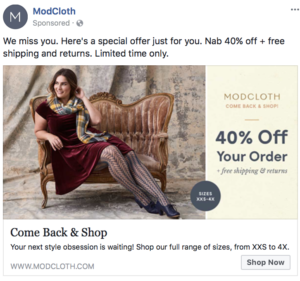Earlier this week, someone rear-ended me at 45 miles an hour and wrecked my car. As a result, I got to spend about five hours on the phone with all the insurance companies trying to leave recorded statements, get a claims adjuster out, be put in a rental car, and so much more. I loved that when I called my insurance company, an actual person answered immediately. I was not happy that the other person’s insurance sent me through ten minutes of automated messages before I could connect with someone.
People want to deal with real people. It doesn’t matter whether they’re calling you or interacting with you through email or social media.
Whoever said business isn’t personal is wrong, in a whole lot of ways. It’s always personal, especially for the customer. It should be personal for you, too.
That’s why we’ve been hearing more about the Business-to-Human (and variations like Human-to-Human) marketing for the past few years.
In this post, we’re going to take a close look at B2H marketing and what it means for businesses today.
What is Business-to-Human Marketing?
B2H marketing takes place of B2B and B2C marketing in theory, prioritizing human connections over empty buzzwords in a world where that’s what people are looking for. Consumers are a little different today than they used to be, in many places of the world.
Instead of hunting for the cheapest deal, people are increasingly wanting to support businesses they believe in, and businesses that they believe care about their consumers. If they feel that the business has taken a special interest in them and their relationship, they’ll stick around and become a loyal advocate for your brand.
What this means: people want to feel real connections with the brands they do business with. They want to form relationships with these brands. If you’re able to provide that, you’ll outshine your competition and provide customers with the kind of service they crave.
How to Implement B2H Marketing
B2H marketing can revolutionize your business, and it’s easier to implement than you’d think. It revolves around understanding different niches of your target audience, and offering them products and services that meets their needs in a unique way. It’s about what you can do for them and building that relationship (even if you never meet face-to-face), instead of trying to trick them into purchasing from you.
Here’s a few ways you can do that…
Understand Your Customers’ Pain Points
Understanding your customers’ pain points is essential in business-to-human marketing. It will allow you to create products that solve their exact needs. It will also allow you to marketing these products and services to appeal to a customer’s pain points.
When you marketing based on pain points, customers will feel that you understand their problems and truly want to solve them. Shakr, for example, wanted to make video marketing affordable, accessible, and much, much easier. We wanted to make it possible that all small businesses could benefit from our professional-quality templates, and scale their video marketing quickly. We market accordingly.
Utilize Segmented & Mass-Personalization Marketing
Not all of your customers will have the same pain points, even if there’s some overlap. Segmenting your audience into multiple niches, use-cases, and pain points will allow you to send targeted messages to them based on their needs. This can create a mass-personalization effect. In this case, customers are getting “personalized suggestions” that feel custom-to-them even if you’re still using a certain number of general campaigns and triggered autoresponders.
Try to Build Real Relationships with Clients
You never have to actually come face-to-face with your customers in order to start to build that personal relationship with them; this is particularly important to remember in today’s mostly-digital world. Salespeople, account managers, and customer service agents should all be trained to make personal connections with customers during every interaction, even if it’s only a one-time interaction through a call center. Overtime, clients will notice that every representative is friendly and invested in them, and that will leave a lasting impression.
Asking how they are, for example, or asking what type of dog they have if they hear them barking in the background provide moments for human-to-human interaction that doesn’t feel cold and mechanical. It’s why Discover’s incredible campaigns always promise that you’ll only talk to real people, all of which are shown brimming with personality.
When you follow up from time to time, ask about the dog or kids or the community play they mentioned. It’s a small thing, but it can go a long way.
Incorporate Video Marketing to Tell Your Brand’s Story
Video marketing is an outstanding vessel for emotional storytelling. And emotional storytelling, in turn, can do a lot to help build that personal connection. You can tell your brand’s story in a way that will connect with your customers. These stories are memorable.
By including real employees or real customers in your videos, you can also help to humanize your brand. They’ll see the people behind the brand and your purpose instead of just a logo. You can also more fully show your brand’s personality using humor, empathy, and sincerity.
Final Thoughts
When given the opportunity, consumers like to support businesses that they truly believe in. Building relationships with customers and valuing them will keep them around long-term. It will create a loyalty that will be more likely to withstand abandonment just because the competitor dropped the cost of their product several dollars below yours. Focusing on business-to-human marketing puts the focus on the customer and their needs, even if you’re doing so using mass-personalization methods.
What do you think? How do you build stronger relationships with your clients? Do you agree with the business-to-human philosophy? Share your thoughts in the comments below!



